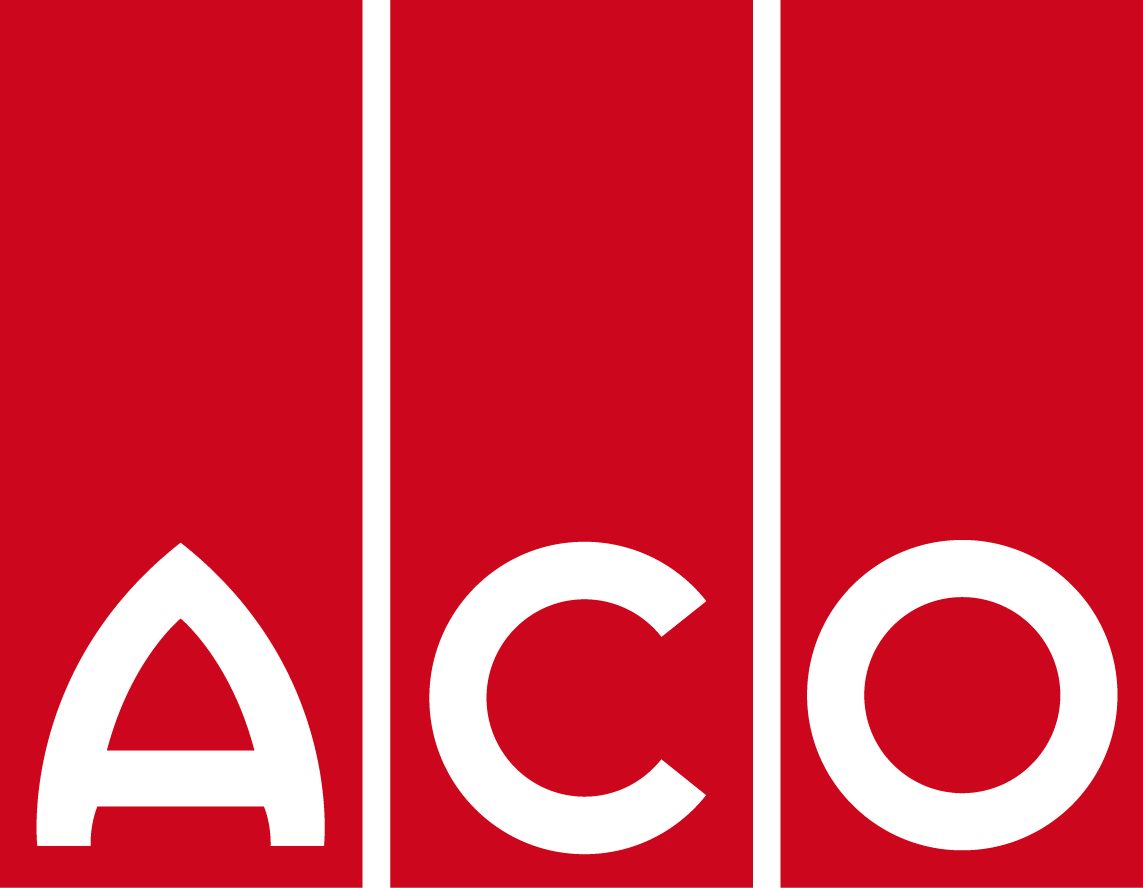ACO’s free drainage services offer! All you need to know about drainage service optimisation
 Project managers and designers, especially those working on projects in the urban environment, constantly face the threat of their budgets running over, causing headaches for all of those involved.
Project managers and designers, especially those working on projects in the urban environment, constantly face the threat of their budgets running over, causing headaches for all of those involved.
The easiest way to avoid this is to prepare and consider all potential problems and issues, but this can become expensive and time-consuming, and even then, you may still miss a few things!
At ACO we recognise that the ability to influence project costs diminishes with time. That’s the concept depicted by the cost-influence curve. A few key decisions made early in the project can greatly reduce the total project cost.
Therefore, it’s important to select the best planning approach for surface water management. We will, at no cost for yourself and your client, provide you with valuable information during the project planning and development stage with our service drainage optimisation service!
ACO is equipped to recommend surface drainage layouts that are particularly useful for designers seeking the optimum design in the early design phase of a project. The objective is to provide a safe, aesthetically pleasing, hydraulically efficient and cost effective drainage layout where: :
- earthworks & pipework are minimized
- existing levels and drainage infrastructure utilised (where possible)
- other specific client or WSUD requirements adhered to
Recently Rider Levett Bucknall, an independent quantity surveyor, compared the installation costs of 3 alternative surface drainage methods at the Homebush Aquatic Centre in New South Wales. The modular, sloped precast ACO Drain came out 4% cheaper than the grated pit and pipe system, and 13% cheaper than equivalent drains that are cast in-situ.
As well as comparing the costs of the systems, there is a strong design argument which focuses on key areas which would determine the overall efficiency and suitability to the Aquatic Centre Car Park. These were; safety & convenience, hydraulics, installation and maintenance. Again, in each of these areas, ACO Drain comes out on top.
Hydraulic Performance
ACO Drain leads in hydraulic performance. When compared to conventional concrete, which exists as cast in-situ installations, the ultra-smooth internal surface of the Polycrete Channels’ V-shape design and sloped configuration allows for uninterrupted flow for maximum velocity. In comparison, the roughness of the concrete in cast in-situ installations, as well as its non graded angular box profile, renders it less efficient than Polycrete Channels.
Safety and convenience
The major downside caused by inefficient surface drainage is ponding leading to slipping and people getting splashed. Polycrete Channels reduce the risk of this hazard as they are designed to complement safe and flat pavements without undulations, capturing liquid along its length. In the grated pit and pipe scenario, overland flow is a hazard in the space between the pits. This also increases the risk of ponding, which can cause severe damage to the pavement.
Constructing linear drainage systems in-situ also has its safety risks due to concrete deterioration, exposing frames and grates from coming loose under traffic. Polycrete Channels comprise an integrally cast metallic level grate seat so that grates can be easily secured.
Installation
Polycrete Channels require simple, one-way sloping of the pavement that is easy to grade and fast to construct. The minimal underground piping means that earth and site works are minimised and less costly than the extensive excavation, formwork, and construction required for the grated pit and pipe system.
Linear cast-in-situ installations rely heavily on the installer’s installation experience, which can be inconsistent from project to project. The advantage of channels is that they are factory manufactured, resulting in a precise and consistent end product every time.
Maintenance
Trench drainage is generally easier to maintain, as access to the system is as easy as removing the grates. The polymer concrete that constitutes ACO Drain requires little maintenance. The smooth surfaces of the Polycrete Channels resist the build-up of mould and biological growth that often forms on the rough surfaces of cast in-situ concrete drainage channels.
Below is a summary of issues with grated pit & pipe systems and cast in situ linear drainage:
Issues with grated pit & pipe systems
 Hydraulics:
Hydraulics:
- Intake – not as efficient compared to the continuous capture inlet along the length of precast modular trench drains.
- Ponding– can occur if pavement isn’t graded correctly.
Safety:
- Overland flow – hazards caused by increasing flow depth and width of flow between widely spaced pits.
- Maintenance – hazards from entering confined spaces and deep pits to clear blockages.
- Pavement longevity – ponding and undulating surface results in a deteriorating pavement, causing hazards such as pot holes and loose pavement.
Installation:
- Excavation – extensive deep underground pipe network, pit construction and site work required.
- Grading – complex four-way slopes can be difficult and timely to design and construct.
- Quality – inconsistent pavement quality may cause ponding.
- Services – potential clash of deep pipes with existing services, which is extremely costly to relocate.
Maintenance:
- Blockage – pipes can be easily blocked from a build-up of debris, and require frequent maintenance.
- Access – difficult to clear blockages and hard to locate as pipes are deep in the ground.
Issues with cast in-situ trench drains
 Hydraulics:
Hydraulics:
- Roughness – cement concrete is not as smooth and as hydraulically efficient as polymer concrete.
- Box profile – not as hydraulically efficient as ‘U’ and ‘V’ profile channels during low flows.
Safety:
- Locking – hard to lock grate to frame, and bolts can rattle loose under traffic.
- Grates – if not locked down they can pose hazards, particularly if a grate is missing.
Installation:
- Site work – excavation, formwork construction and creation of slope can be costly and time consuming.
- Quality – dependent on the experience of the installer, it can be inconsistent and vary greatly.
- Frame – difficult to achieve level frame with good concrete support, which is a common cause of future problems.
Maintenance:
- Access – time consuming to undo bolts to access channels compared to the boltless locking options available for precast modular trench drains.
- Siltation – roughness of concrete will more likely silt up and require cleaning out more frequently.
Overall, our Philosophy is built on the premise that traditional methods of drainage may undermine or hold back the architectural design objective of the project – safety, cost, form, and function.
Therefore, we believe it’s the joint responsibility of the landscape architect and the drainage designer to assess all risks.
ACO’s knowledge in modern surface water management methods is well known amongst these designer types and we are constantly requested, on a project basis, to contribute in discussions between architects and engineers both in Australia and Overseas.
If you want to find out more about any of ACO’s drainage products, call 1300 765 226 to speak with an expert, or contact us now via email.






